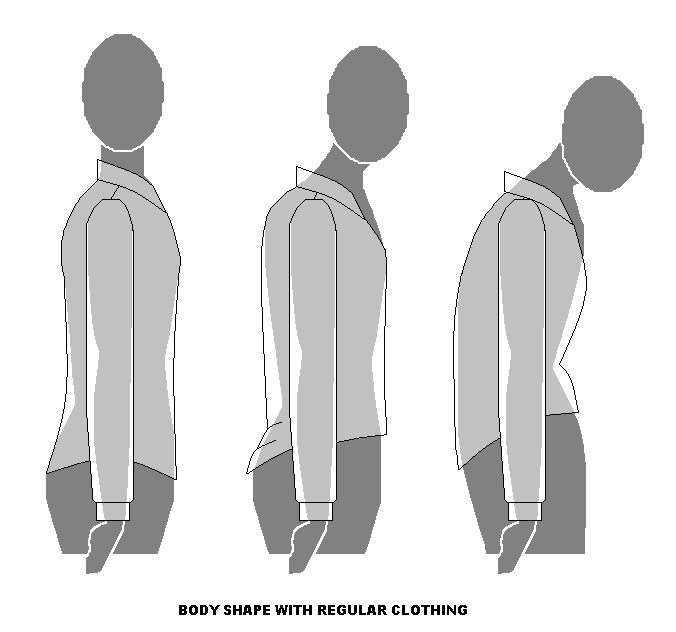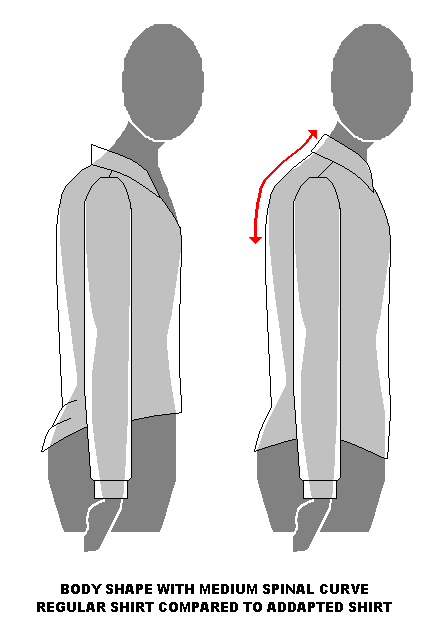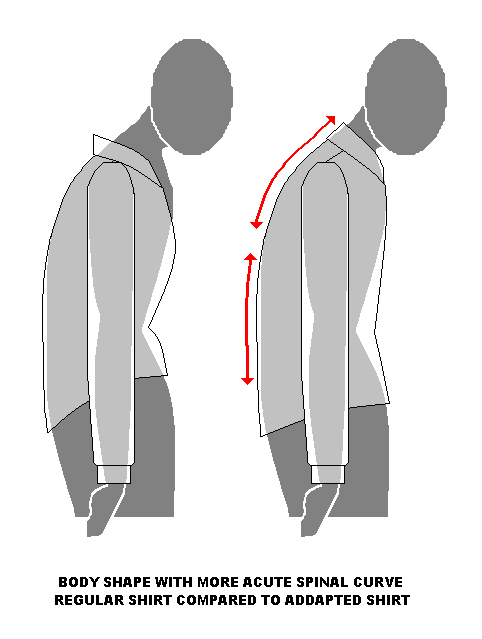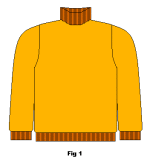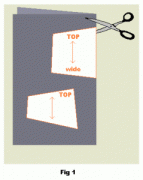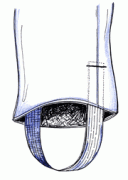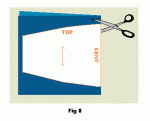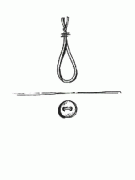Fit and type of shirts/tops to look for
When adapting garments it is generally important to understand that the quality and fit of the garment pre-adaptation is vital for the result. Ill fitting clothes will not miraculously fit well after an adaptation. Note however that a slightly loser fit often will give you a better result. Try on the shirt/top both while sitting still as well as when moving about in your usual manner.
In this part of Fashionfreaks you will find solutions that can be used by themselves or in combination with each other. Which solution or combination of solutions that will fit you depend on your seating position and the curve of your neck and back. As you can see on the picture to the left in the illustration below ready-made shirts/tops are designed for a body with straight spine. Well, they are a really only fit to a straight body standing up.
If you have a somewhat curved sitting position this will mean that your neck is slightly curved and you get a longer neck line. Ordinary shirts and tops will then sit with a gap at the neck line. This will probably also be the case if you have well developed shoulder and neck muscles due to f.ex. using a manual wheelchair.
If you sit more with a crescent shaped back and neck both the front and back of ready-made shirts/tops will be ill fitting. This is not an uncommon seating position used to create better balance by some wheelchair users.
Depending on how you sit and how your back and neck are shaped you will need to use one or more adaptations to create a more well fitting and comfortable top.
In the illustration below you can see how an ordinary shirt will sit on a body with a curved neck line to the left. To the right is how an adapted shirt will sit on the same body type. The adaptations are shown on a shirt with collar but can be done on other types of tops.
In the illustration below you can see how an ordinary shirt will sit on a body with a crescent shaped back and neck line left. To the right is how an adapted shirt will sit on the same body type. The adaptations are shown on a shirt with collar but can be done on other types of tops.

